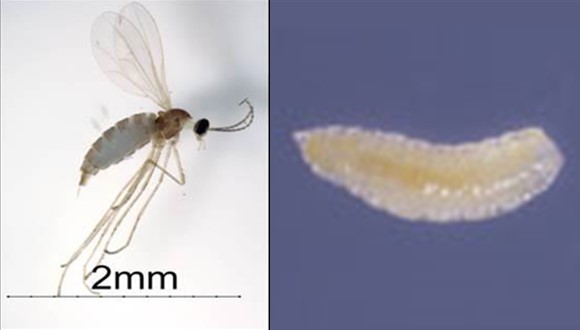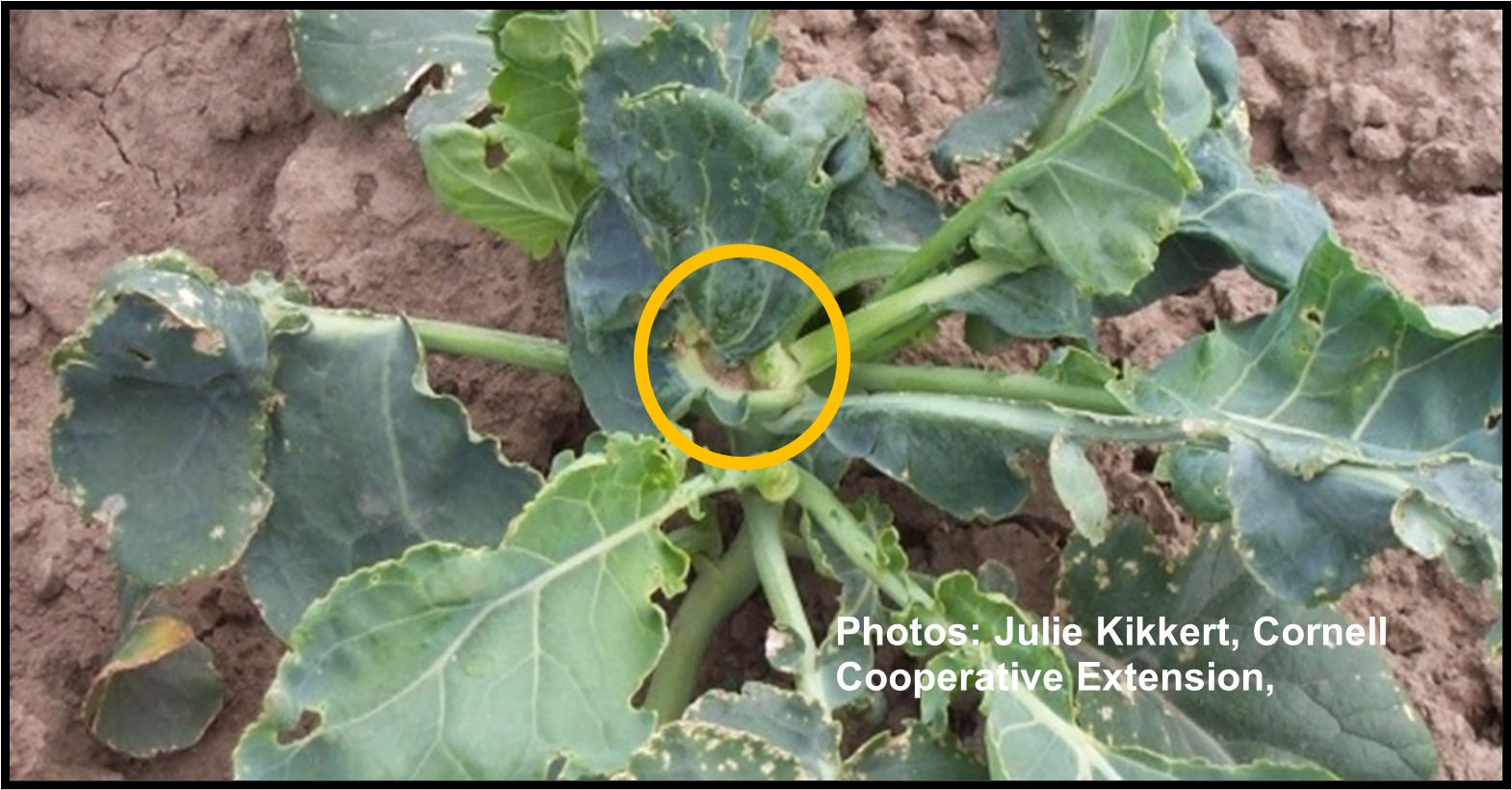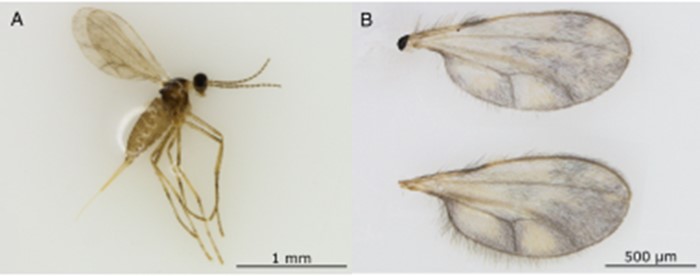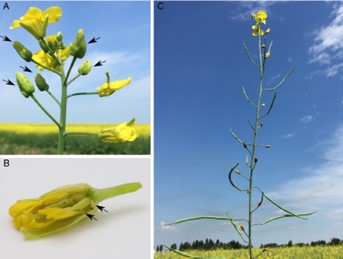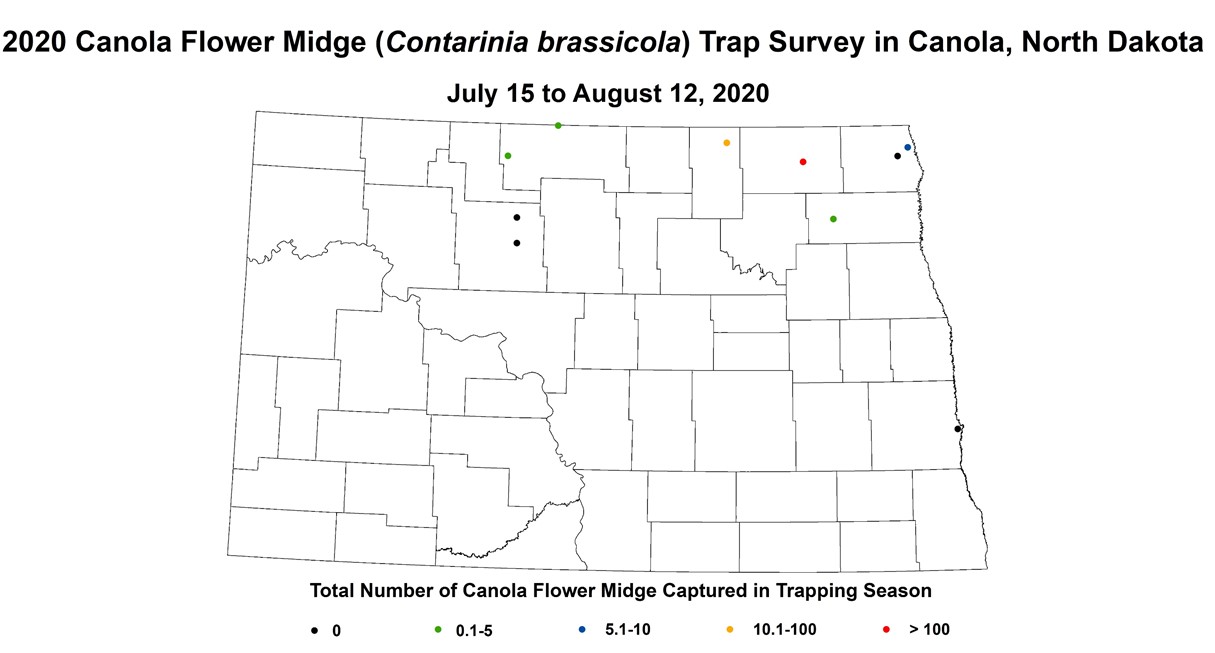(Trappers: Lindy Berg, Jolena Lowery, Traci Murphy, Sara Clemens, LoAyne Voigt, Riley Racine, Iris Dukart, Kia Ward, Carrie Nichols, Sean Nichols, Tommy Crompton, Veronica Calles-Torrez, Marc Michaelson)
Since 2015, the NDSU IPM team headed by Dr. Janet Knodel has been trapping for midges in canola. The trapping was initially focused on Swede midge (Contarinia nasturtii) a close relative of wheat midge belonging to the same family Cecidomyiidae, but attacks only cruciferous plants like canola, cabbage, cauliflower, radish, and broccoli. The adult midge looks like a small mosquito about 2mm long (Figure 1). The midge larvae are tiny translucent white maggots that feed on the growing points of the plants forming galls and deformed growing points (Figure 2). The good news for canola growers in ND is that all the trapping results were negative for this midge since 2015. Future survey work will be essential for early detection of swede midge to keep canola growers informed of new insect pests.
Figure 1: Swede Midge Adult and Larva
Figure 2: Swede Midge Crop Damage
A new insect damaging canola was identified in Canada in 2017 (northeastern Saskatchewan and east-central Alberta). The new insect, also a midge, is being called the ‘canola flower midge,’ Contarinia brassicola. Adults and larvae are similar to swede midge in size and appearance (Figure 3). Larval feeding causes bottle-shaped galled flowers which do not produce pods or seeds (Figure 4). The economic impact of this insect in canola is still under investigation.
Figure 3: Adult Canola Flower Midge
Figure 4: Canola flower midge feeding damage
A) Unopened caper-shaped flower galls
B) Midge larvae in canola flower bud
C) Missing pods with un-opened flower buds
Trapping Protocol: Delta traps, with species specific pheromone lures, were placed in canola fields from mid-June (rosette) through mid-August (ripening crop stage) (Figure 5). Sticky trap liners were removed weekly and kept frozen until shipment to Dr. Knodel’s laboratory in Fargo (Figure 6). The species of midges were identified by Patrick Beauzay. Data were summarized and maps were prepared to illustrate the presence or absence of swede and canola flower midges using ArcMap.
Figure 5: Delta traps used for swede and canola flower midge trapping.
Swede Midge Results
All trap data were negative for swede midge from 117 trap sites in 15 counties during 6 years of pheromone trapping (2015-2021).
Canola Flower Midge Results
Pheromone trapping for canola flower midge in ND started in 2020 in 8 counties and in 10 counties in 2021. In 2020, 6 trap sites were positive out of a total of 10 trap sites. A total of 426 canola flower midges were captured. The three trap sites with the highest number of canola flower midges were:
Cavalier County- 333 2. Towner County- 77 3. Pembina County- 10
All midges were captured during late July through the first week of August.
Five out of 10 trap sites were positive in 2021. A total of 541 canola flower midges were captured which shows an increase of 12% from 2020. The three trap sites with the highest number of canola flower midges were:
Towner County- 277 2. Cavalier County- 107 3. Bottineau County- 105
Midges were captured during early July through the first week of August with peak during late July into early August.
Acknowledgement
We thank Dr. Honggang Bu for the maps. Funding for this project was provided by the Northern Canola Growers Association and the USDA National Institute of Food and Agriculture, Crop Protection and Pest Management Program – Extension Implementation Program [grant no. 2017-70006-27144].
